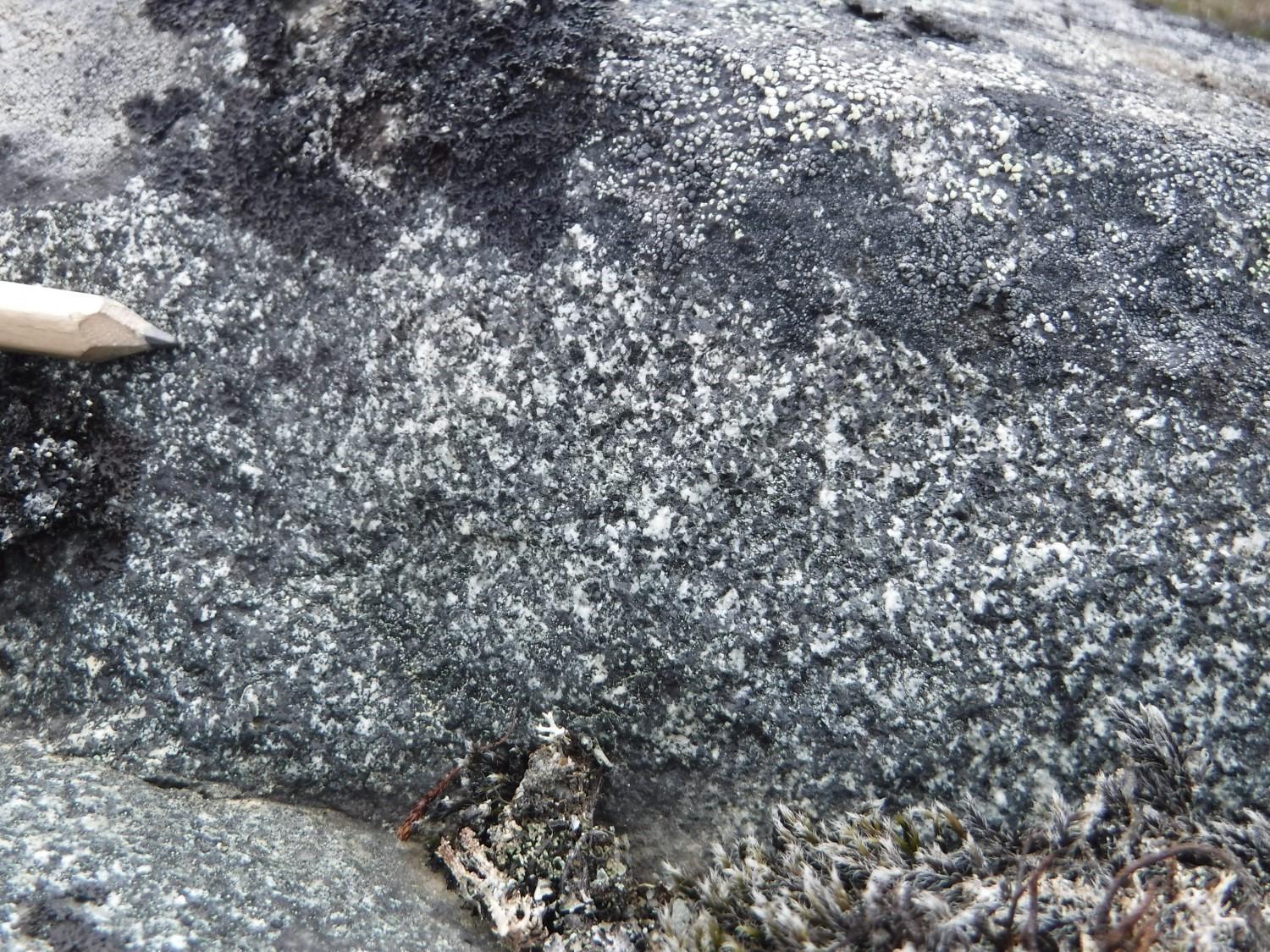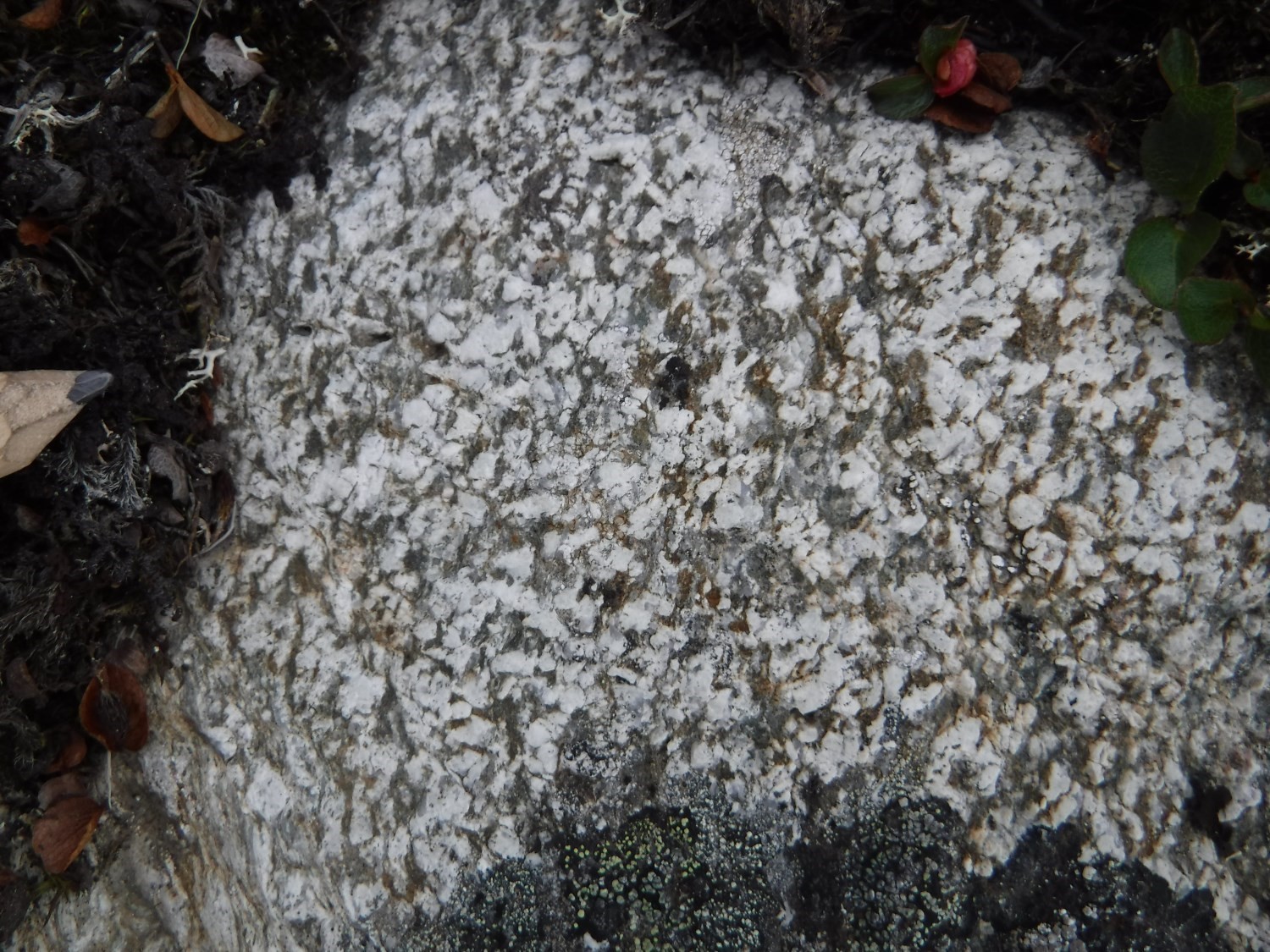
DISCLAIMER: This English version is translated from the original French. In case of any discrepancy, the French version shall prevail.
| Author(s): | Beaudette et al., 2020 |
| Age: | Paleoproterozoic |
| Stratotype: | None |
| Type area: | Parent Lake area (NTS sheet 35G11) |
| Geological province: | Churchill Province |
| Geological subdivision: | Ungava Orogen / Northern Domain |
| Lithology: | Gabbro, diorite |
| Category: | Lithodemic |
| Rank: | Suite |
| Status: | Formal |
| Use: | Active |
None
Background
The Iqiat Suite was introduced by Beaudette et al. (2020) to group massive to foliated intrusive rocks (gabbro, diorite) cutting volcanic rocks of the Parent Group in the central part of sheet 35G11. These lithologies were previously assigned to the Cape Smith Suite (Lamothe, 2007).
Description
The Iqiat Suite consists of diorite and gabbroic diorite plutons. It is characterized by its homogeneity in composition and texture at the sample scale, and by its heterogeneity both at the outcrop and unit scale. Overall, rocks are mesocratic and fine to medium grained. They are composed of similar amounts of plagioclase and hornblende. The rock can contain up to 30% hornblende phenocrystals 2 mm to 7 mm in size. Plagioclase comes in a variety of shapes and colours. They are mostly stocky, even quite round and milky white to beige. They occur locally as translucent white to pinkish laths 1 mm to 5 mm long or tangled, giving an ophitic to subophitic texture to the rock. This texture is not diagnostic of the unit, since some gabbro sills associated with volcanic rocks of the Parent Group and certain phases of the Sirluaq Suite show similar textures. Quartz, epidote, chlorite, apatite and opaque minerals are among the accessory minerals.
Some outcrops contain small elongated enclaves of amphibolitized gabbroic material. These generally represent ~5% of the surface area of outcrops, but can form enclave fields representing up to 20%. Rocks of the Iqiat Suite are generally massive, particularly in the centre of plutons, and locally foliated to very foliated in tectonized zones.
Some heterogeneous outcrops of the Iqiat Suite share compositional and textural similarities with the Qikirtalialuk Suite. However, geochemical characteristics allow us to distinguish between these two units; the Iqiat Suite is more dioritic, while the Qikirtalialuk Suite is more gabbroic. On the other hand, the Iqiat Suite is transitional to calc-alkaline, while the Qikirtalialuk Suite is tholeiitic to transitional.
Thickness and Distribution
Four plutons spread over two sectors of the Parent Lake area make up the Iqiat Suite. Three intrusions are located in the east-central part of sheet 35G11, and the fourth in the west-central part. In plan, the dimensions are 9.5 km by 5 km, 4 km by 2.5 km, 3.5 km by 1 km and 4 km by 2 km, with long axes oriented parallel to the structural grain. The deep rooting thickness is unknown.
Dating
None.
Stratigraphic Relationship(s)
The Iqiat Suite is intrusive in the Parent Group, Qaaneq Complex, as well as in the Sanimuapik, Qikirtalialuk and maybe Foucault suites.
Paleontology
Does not apply.
References
Publications Available Through SIGÉOM Examine
BEAUDETTE, M., BILODEAU, C., MATHIEU, G. 2020. Geology of the Parent Lake area, Ungava Orogen, Nunavik, Quebec, Canada. MERN. BG 2020-04, 1 plan.
LAMOTHE, D. 2007. Lexique stratigraphique de l’Orogène de l’Ungava. MRNF. DV 2007-03, 66 pages and 1 plan.
Suggested Citation
Ministère de l’Énergie et des Ressources naturelles (MERN). Iqiat Suite. Quebec Stratigraphic Lexicon. https://gq.mines.gouv.qc.ca/lexique-stratigraphique/province-de-churchill/intrusion-iqiat_en [accessed on Day Month Year].
Contributors
|
First publication |
Carl Bilodeau, P. Geo., M.Sc. carl.bilodeau@mern.gouv.qc.ca; Mélanie Beaudette, GIT, B.Sc. melanie.beaudette@mern.gouv.qc.ca (redaction) Mehdi A. Guemache, P. Geo., Ph.D. (coordination); James Moorhead, P. Geo., M.Sc. (critical review); Simon Auclair, P. Geo., M.Sc. (editing); Céline Dupuis, P. Geo., Ph.D. (English version); André Tremblay (HTML editing). |



